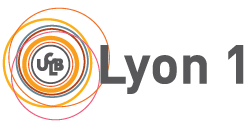-Transversal
- Adopt a transversal approach in the design of experimental protocols in neuroscience (molecular, cellularintegrative, cognitive, and/or ethology), by integrating differentapproaches
- Carry out a scientific study, with a view to an evaluation, a development, design, application, or in order to test or develop a model.
- Formulate working hypotheses, develop protocols,recommend methodological choices, analyze experimental data and produce representative diagrams of observed phenomena
- develop a critical awareness of knowledge in the field
- Solve problems to develop new new knowledge and new procedures
Specific
Mobilize knowledge highly specialized knowledge, at the the forefront of knowledge in the field, as the
basis of an original original thought
- search for information in the appropriate databases
- reformulate an industrial application question into a neuroscientific problem
- master the physiological measurement tools of perception and emotions (eyetracking, EEG, RED, ECG...)












